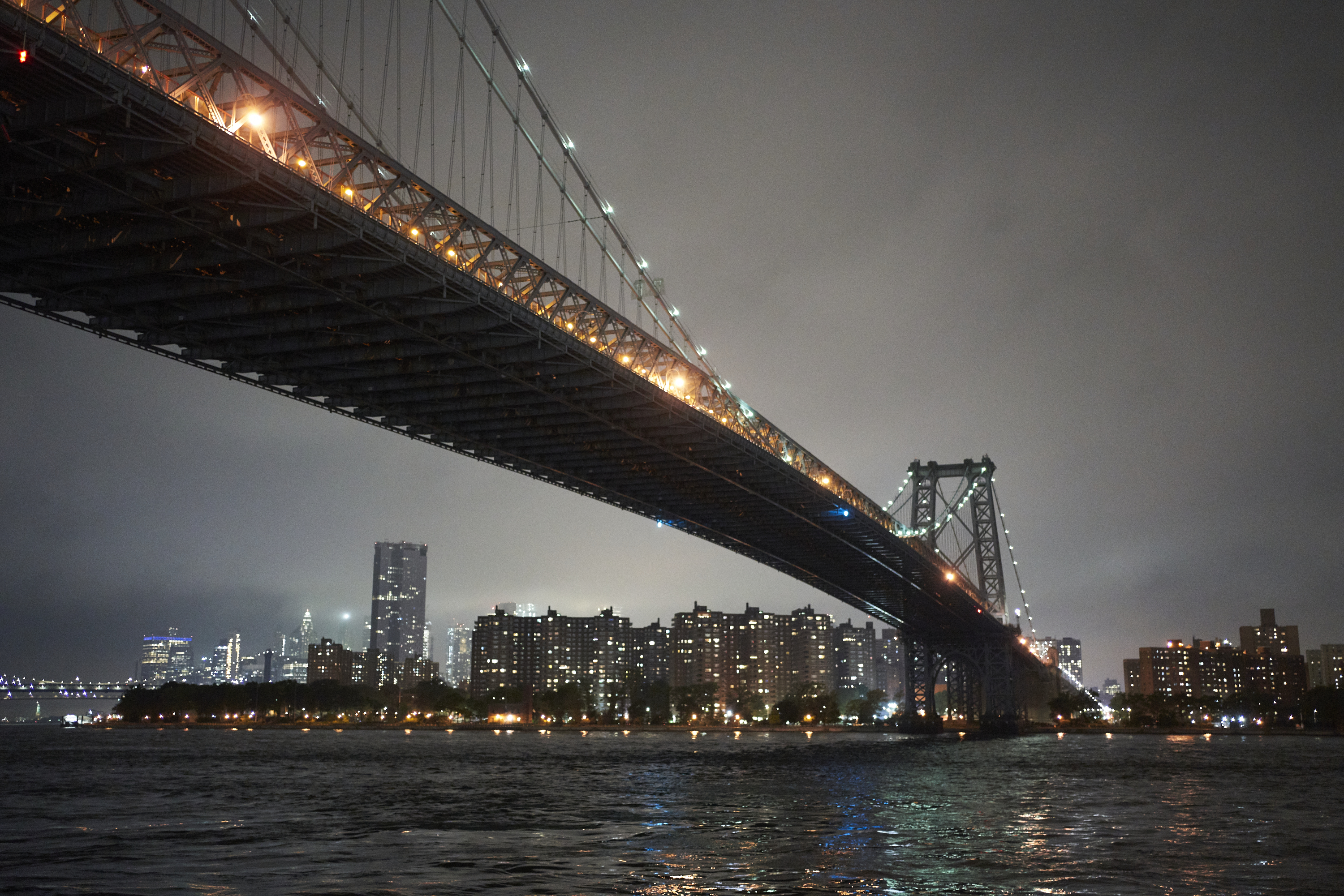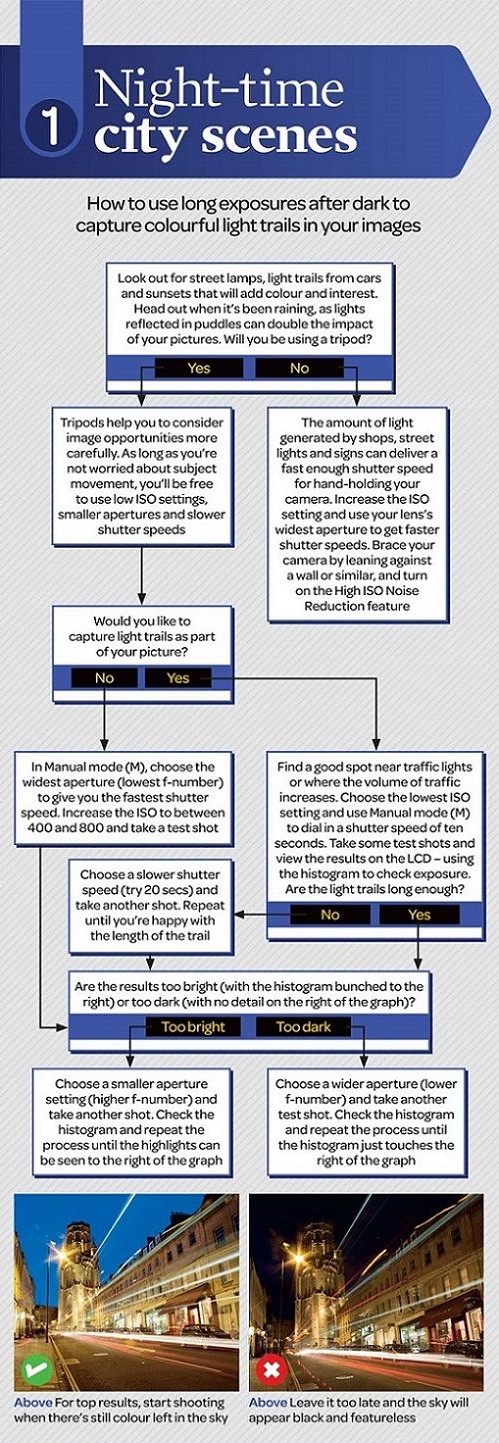Looking to get extra creative with city scenes at night? You definitely have to check out today’s photography cheat sheet.
Shooting long exposures is one of the popular ways to capture city scenes at night, as it opens up a number of creative possibilities. Among these is including colorful light trails to give photos a more dynamic and energetic feel. If you’re in the mood to get extra creative with your city snaps or simply want to try something new, we have just the right photography cheat sheet to help you snag some cool shots!
The photography cheat sheet below by Digital Camera World is part of their tips and tricks for shooting at night and in low light situations. At night, the city is perfect for getting started with long exposures: there are many interesting lights and elements that can help create vibrant shots.
The cheat sheet begins by asking you to take a good look at your surroundings, noting street lamps, cars, the sunset, and even puddles left by the rain. You can actually use these to add color and interest to your photos. If you’re not using a tripod, look for the brightest spots lit by shop lights and street lamps: these are often good enough for shooting handheld. Just make sure to use the widest aperture setting, increase the ISO to use faster shutter speeds, and turn on your camera’s High ISO Noise Reduction feature. If you can, lean against the wall or a firm surface to help steady your camera.
If you have a tripod with you, you have more options. If you’re not capturing moving scenes, you can shoot with low ISO, smaller apertures, and slower shutter speeds. But if you want to capture light trails, look for a spot where cars typically pass. Shoot in Manual mode at the lowest ISO and set the shutter speed at 10 seconds. Take some shots, then check the histogram for exposure and if the light trails are to your liking. If the shot is too bright, use a smaller aperture (higher f-number) and recheck the histogram to make sure the highlights are visible (to the right). If it’s too dark, use a wider aperture (lower f-number) instead. If the light trails are too short, increase the shutter speed to 20 seconds. Feel free to experiment and see how it works for you!
Don’t forget to check out our photography cheat sheet collection for more useful photography tips and tricks like this!



